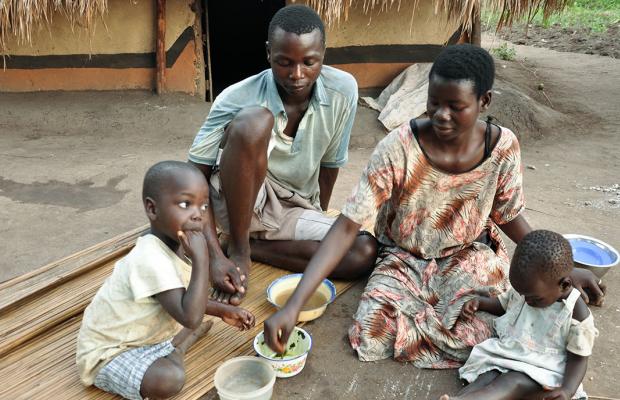
Uganda had more poor people in 2017 than in 1991 indicating a rise in income and food poverty
COMMENT | ENOCK NYOREKWA TWINOBURYO | On Feb.19, the Uganda Bureau of Statistics (UBOS) issued a second and revised version of the Uganda National Household Survey (UNHS) 2016/17. The major revision from the first UNHS 2016/17 published in September 2017 was the 6 percent point difference (reduction) in the poverty rate.
In the latest UNHS 2016/17, poverty is estimated that 21.4 percent of Ugandans, meaning that nearly 8 million persons are poor while the September 2017 results indicated that poverty was 27.7 percent translating into 10 million poor Ugandans. There is no valid explanation provided for such a large error variation in poverty statistics and yet many other indicator results did not change in the two versions of the survey results. This coupled with other inconsistences in the UNHS statistics further cause one to question their validity.
According to the 2016/17 UNHS, 2.9 percent of the Ugandan population owned vehicles. This translates into 1.1 million Ugandans owning cars, a number which is 30 percent over and above the actual number of privately owned cars. The total number of cars between the UAA 001A vehicle registrations plate (number plate) series and the current UBD 001B series, is less than 700,000. And not all privately owned cars are owned by individuals. Even considering motor cycles under the vehicle category, it still arguable that the 15,636 households sampled in the survey may have been from a relatively higher income bracket thus discounting some of parameters like poverty.
The survey poverty statistics illustrate an increase in the number of poor people from the 6.6 million in 2012/13 when poverty rate was 19.7 percent and 7.5 million poor (24.5 percent) in 2009/10 but lower than the 9.3 million poor people (56.4 percent) in 1991. However, the September survey results had indicated more poor people in 2016/17 than in 1991.
The general increase in poverty over the last decade implies that the NDPII 2020 target of poverty rate reduction from 19.7 percent in 2015 to 14.2 percent by 2020 will not be met. Additionally, the average consumption expenditure per adult equivalent of Shs96,600 is only slightly above the national poverty line, which implies an elevated risk of a number of Ugandans falling back into poverty. This is corroborated by Poverty Assessment Report 2016 that indicated that for every three citizens lifted out of poverty between 2005 and 2009, two fell back in poverty. Important to note is that the Ugandan Poverty line (USD 1 per day) was last set in 1993 and remains substantially low to capture the changes in prices and consumption patterns.
The increase in number of poor people also means that the rate at which poverty is being reduced is lower than the rate of population growth. Uganda like the African continent is yet to undergo demographic transition in terms of low fertility and dependency. Uganda’s population growth remains at 3.03percent per annum compared to the 2020 target of 2.9 percent. Juxtaposing the income pyramid and population, suggests that the poor bear more children and few babies are born as you move up the income pyramid. An average poor household is larger than national average of 4.7. This tends to perpetuate the culture of poverty at risk of it becoming chronic and transient poverty.
The biggest share of Uganda’s population is rural based (76percent) and as such estimated to account for 89percent of the poverty. The incidence of poverty remains higher in rural areas than in urban areas and not surprising that most poor people are predominantly still farmers. The incidence of poverty was highest in the Eastern region (36 percent) replacing the Northern region which had consistently lagged behind all the other regions in the previous surveys.
Uganda’s high population growth has implications for most macro-economic indicators and social transformation. Agriculture sector growth has been outpaced by the population growth in recent years at the risk of sustained food insecurity. Food insecurity across all regions in Uganda has been on the increase over the last couple of years. According to the National Food Security Assessment in January 2017, 10.9 million Ugandans were experiencing an Acute Food Insecurity situation, of which 1.6 million are in a crisis situation (unable to meet basic dietary needs without engaging in unsustainable strategies to access food and income, including any reliance on humanitarian assistance). The findings are consistent with the UNHS 2016/17 results that show 37 percent of households in Ugandans were food poor with the highest cases recorded in Karamoja (70 percent) and Bukedi sub-regions (58 percent) while Ankole (14 percent) had the fewest.
Poverty is a structural problem and will require structural reforms on the basic factors of production (land, Labour, entrepreneurship, capital). Land mapping, registration and titling remains an imminent reform. Land conflicts are believed to account for a sizeable reduction in agricultural output. An efficient reform approach on the “4 Is” (Individuals, Institutions, Infrastructure and Integration in that order) remains warranted. There is also need to focus more on per-person metrics and reforms.
*****
Dr Enock Nyorekwa Twinoburyo is an economist
 The Independent Uganda: You get the Truth we Pay the Price
The Independent Uganda: You get the Truth we Pay the Price



Abra app Google Residence no seu smartphone ou tablet.